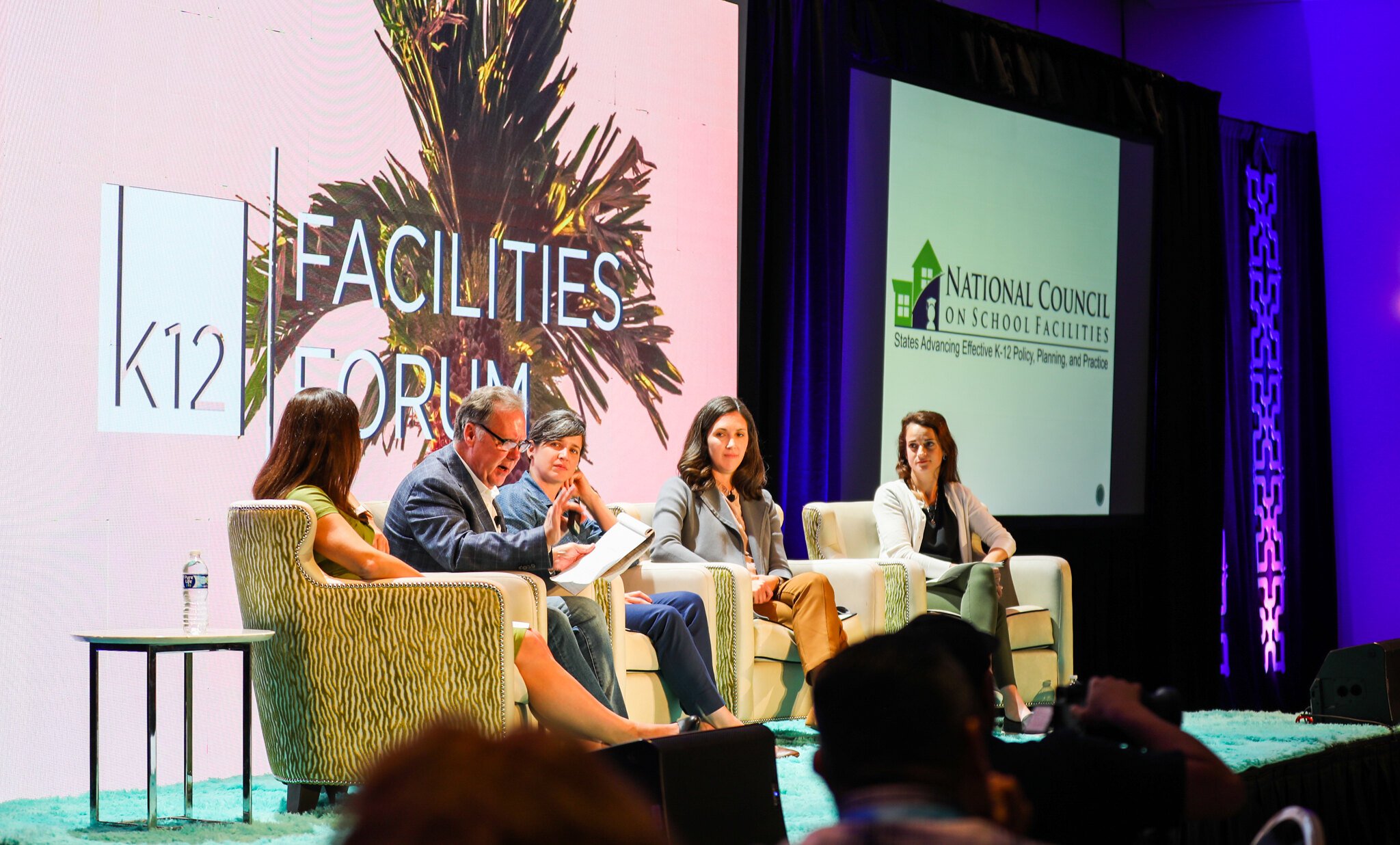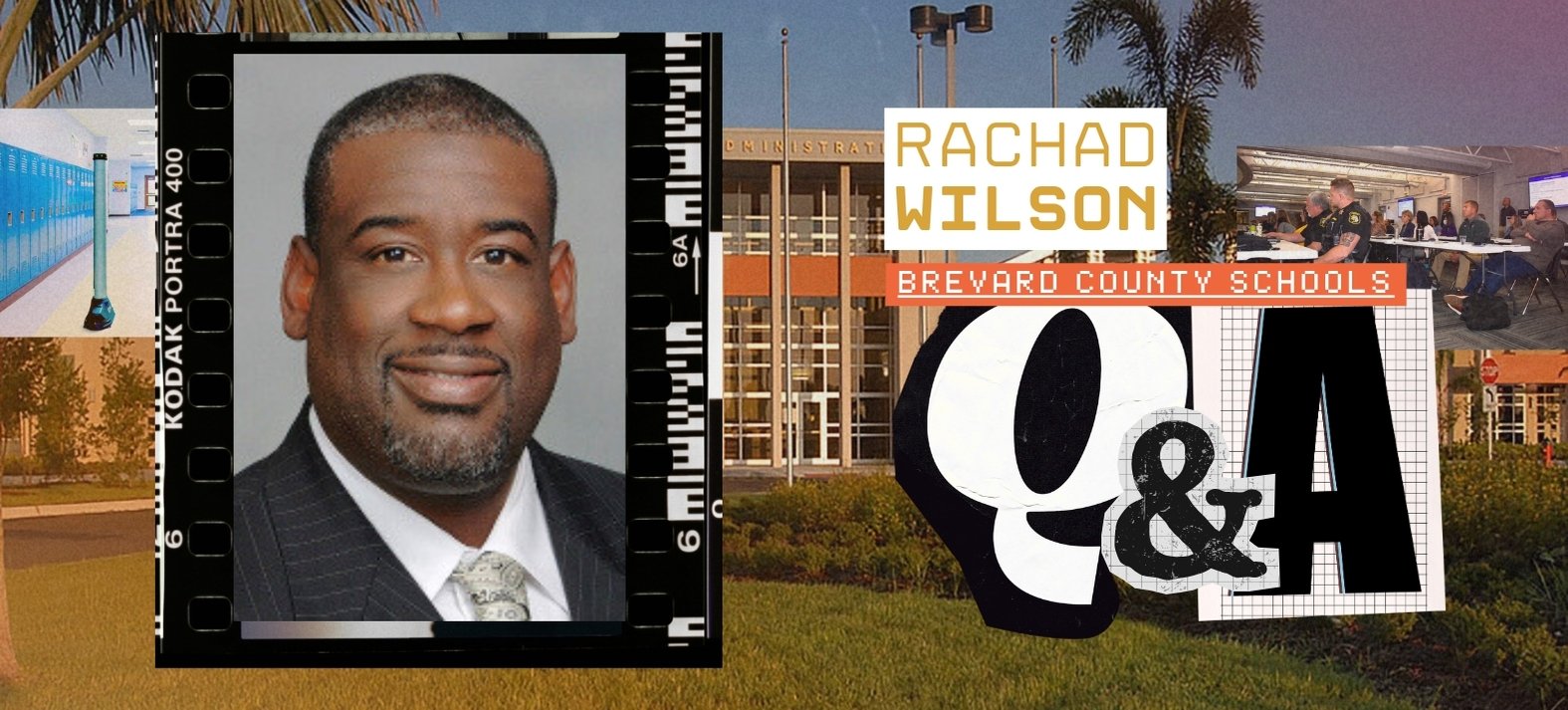Over the last several years, the federal government has given public school districts unprecedented relief funding to improve facilities in the wake of the COVID-19 pandemic. As districts head into 2023, however, they still face significant constraints.
According to Mike Pickens, Executive Director of the National Council on School Facilities, the nation’s school systems have an $85 billion funding gap: $57.4 billion in capital improvements, and $27.6 billion in maintenance and operations. "That gap is the difference between where we are and where we need to be, as school buildings, to deliver the maximum education that we can,” Pickens said in a recent panel discussion at the K12 Facilities Forum.
As his fellow panelists explained, school districts may yet be able to access substantial federal funding to close this gap – and if they share their stories with policymakers, they may be able to secure meaningful long-term programs to ensure future sustainability.
Moderated by Andrea Suarez Falken, Special Advisor for Infrastructure & Sustainability at the U.S. Department of Education, the conversation also included Becky Cook-Shyovitz, Environmental Protection Specialist at U.S. Environmental Protection Agency; Andrea Swiatocha, Schools Program Manager, State & Community Energy Program at the U.S. Department of Energy; and Anisa Heming, Director at Center for Green Schools.
Measuring ESSER’s Success
The Center for Green Schools recently published a report, based on data gathered by Burbio, examining how 5,000 school districts are using their ESSER III funds. As Heming explained, the report shows that facilities comprise the second highest spending category – after staffing – with air filtration/HVAC accounting for $5.5 billion in planned spending. It also reveals that of the 2,500 districts planning to spend any ESSER funds on facilities, larger districts planned to spend the lowest percentage of their allocated funds, while smaller districts planned to spend the highest: an average of 22% and 30%, respectively.
When Heming and her team reached out to individual school districts for more detailed case studies, they gained deeper insight into the importance of ESSER funds in closing the facilities gap for small and medium-sized districts.
"They can't get this level of funding for schools very often, so they really wanted to put it into some major projects for their school district."
"The case study districts all said, ‘We would not be able to do these projects without this money, and we can't get this through bond funding in our community,’" she said. "Small and medium districts were also spending more per school; they were doing bigger projects within this data set than the larger school districts, from what we can tell.”
One district she profiled is Colorado Springs School District 11, which allocated an average of $500,000 per school on air filtration upgrades. "They made the point that they can't get this level of funding for schools very often, so they really wanted to put it into some major projects for their school district," Heming said. As a result, the district saw lower infection rates than the county's overall rates, as well as decreased energy use in schools with upgraded HVAC systems.
Renewing America’s Schools
School districts can now apply for additional federal funding through the Department of Energy’s Renew America’s Schools grants. As Swiatocha explained, the program includes $500 million in competitive grants to be released over five years. The funds are intended for improvements, repairs, or renovations that reduce energy costs, install renewable energy or clean vehicle infrastructure or purchase or lease clean vehicles.
"We're looking for innovative, replicable, scalable projects that we can develop as case studies that we can share and work with other school districts."
While the full eligibility requirements are available via the DOE, Swiatocha stressed that the Department will target schools with demonstrated funding needs, especially those with a high percentage of students eligible for free or reduced-price lunch, and schools in rural areas.
“It's important to note that this is going directly to the local school districts,” she said. "We're looking for innovative, replicable, scalable projects that we can develop as case studies that we can share and work with other school districts."
"We're also looking for you all to leverage this," she added. "Think about other private sector partnerships, your local bond and state bonding capacities. How can you make this a bigger project and combine that funding? One of our goals with the grant is to facilitate that substantial additional investment."
The DOE is also overseeing the Energy CLASS Prize, which will award cash prizes of $100,000 to as many as 25 local educational agencies to fund energy management professionals. "That could be split over one person, two people, it's completely up to you," Swiatocha said. "But that individual – or those individuals – in that school system will be able to attend training and receive one-on-one coaching all around energy management.”
Improving Education by Improving Air Quality

For school districts looking to continue improving their air quality, the Inflation Reduction Act allocated $50 million in grant funding via the Environmental Protection Agency. Cook-Shyovitz stressed that air quality improvements are about more than mitigating COVID, however. “Air quality can help you reach your primary goal of educating students," she said. "Nearly one in 13 school-aged children has asthma, which is the leading cause of school absenteeism. And there's substantial evidence that indoor environmental contaminants, many of which are common allergens in schools, can trigger asthma symptoms, which ultimately impacts student and teacher performance and attendance.”
While eligibility and application details on the EPA’s air quality funding are forthcoming, Cook-Shyovitz said her team expects that roughly $37.5 million will be directed towards outdoor air quality – initiatives that reduce pollution and greenhouse gas emissions – while the remaining $12.5 million will focus on indoor air.
Local educational agencies are also eligible for the EPA’s Wildfire Smoke Preparedness in Community Buildings Grant Program, which includes $4 million for activities addressing wildfire smoke hazards – “things like installing filters, retrofitting your HVAC system,” Cook-Shyovitz said. The Clean Bus Program, meanwhile, will provide $1 billion in rebate funding for zero-emission and low-emission school buses. -Act-Tribal-Grants.jpg?width=981&height=517&name=K12F-Water-Infrastructure-Improvements-for-the-Nation-(WIIN)-Act-Tribal-Grants.jpg)
Finally, the EPA’s WIIN Grant provides $500 million over five years for efforts to reduce lead in drinking water – keep your eyes out for an RFA in the spring – while the State Voluntary School and Childcare Lead Testing and Reduction Grant Program provides non-competitive funding for schools to test their drinking water and make improvements if necessary. "You can change the pipes, change your faucets, install water-filling stations, whatever it is that you need," Cook-Shyovitz said.
Securing Funding for the Future
Before the panel concluded, Heming brought up another case study that demonstrates the impact of ESSER funds, especially to small school districts: Wicomico, Maryland, which dedicated 63% of its ESSER III funding to facilities improvements at its 24 schools, or about $1.25 million per school.
"What we heard from them was that they had been doing a lot of capital planning over the last few years and they were just ready," she said. "They had all this stuff outlined in their capital planning, and they saw this money come and said, 'We’ve got to jump on it, because we don't have this kind of money in our local community to do this work.”
In her work at the Center for Green Schools, Heming hopes to hear from more school districts like Wicomico, so she can bring their stories to policymakers and hopefully secure longer-term federal investments in programs like America’s Schools.
"Five hundred million is not a lot through DOE, but it is the first time that the federal government is providing that kind of funding directly to school districts," she said. "It could happen again, it could happen more, and we could help that happen if we have the right stories of really effective usage of that funding."

Posted by
Join us at the K12 Facilities Forum!
The community for district and facilities leaders
Nov 8-10, 2026 | San Antonio, TX









-3.png)

Comments